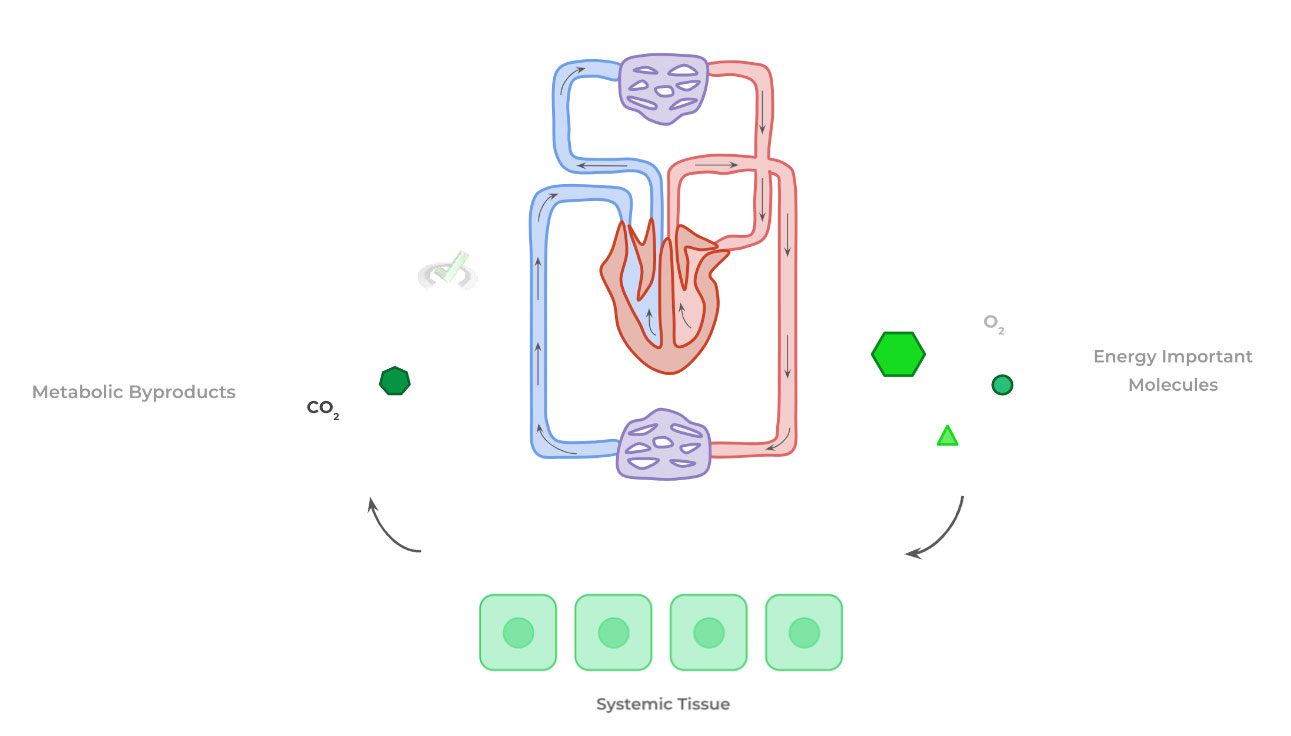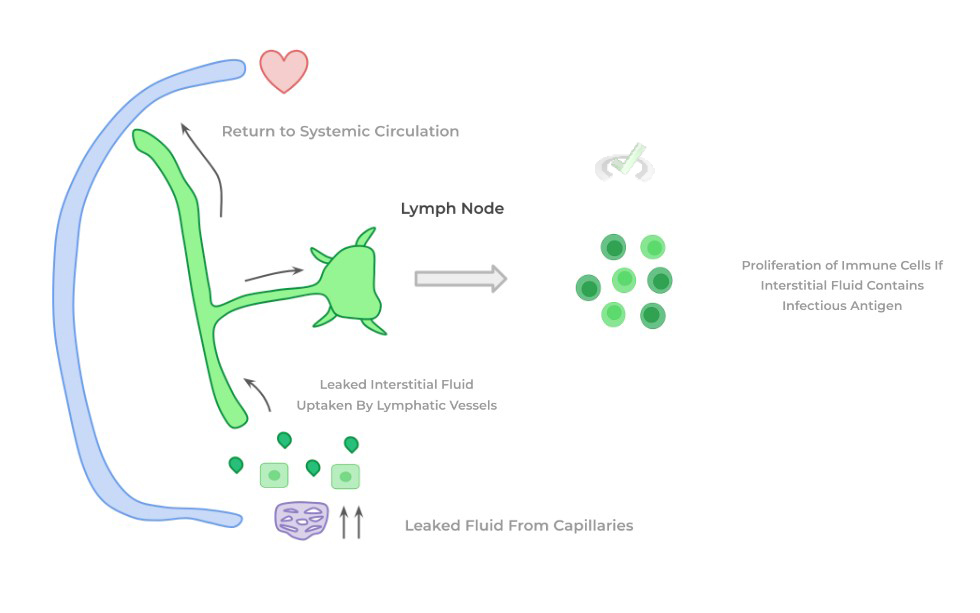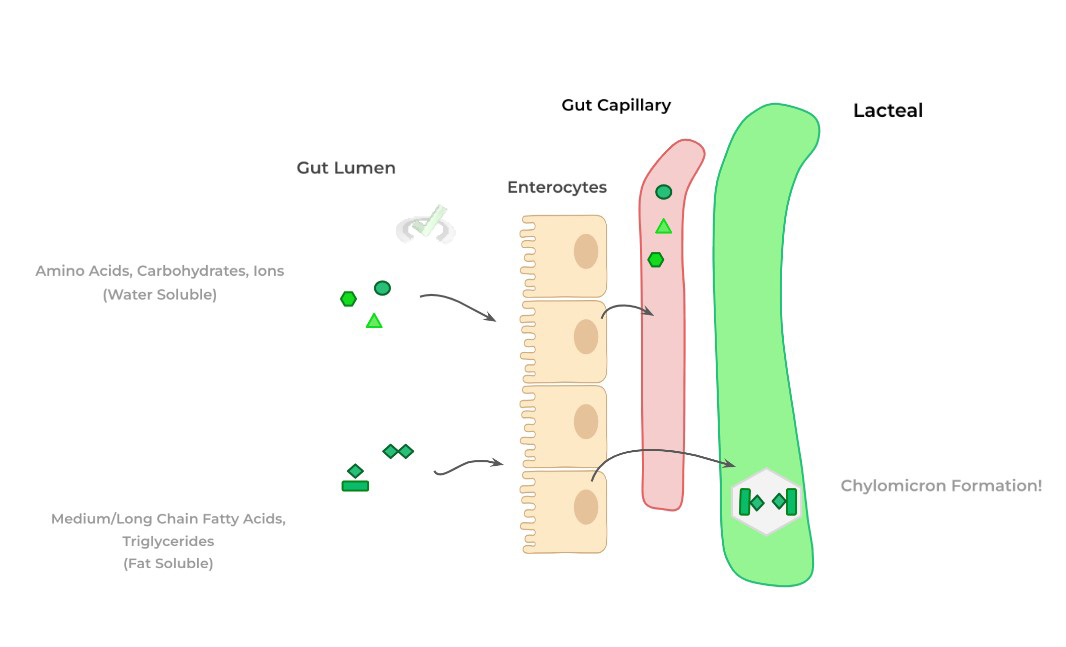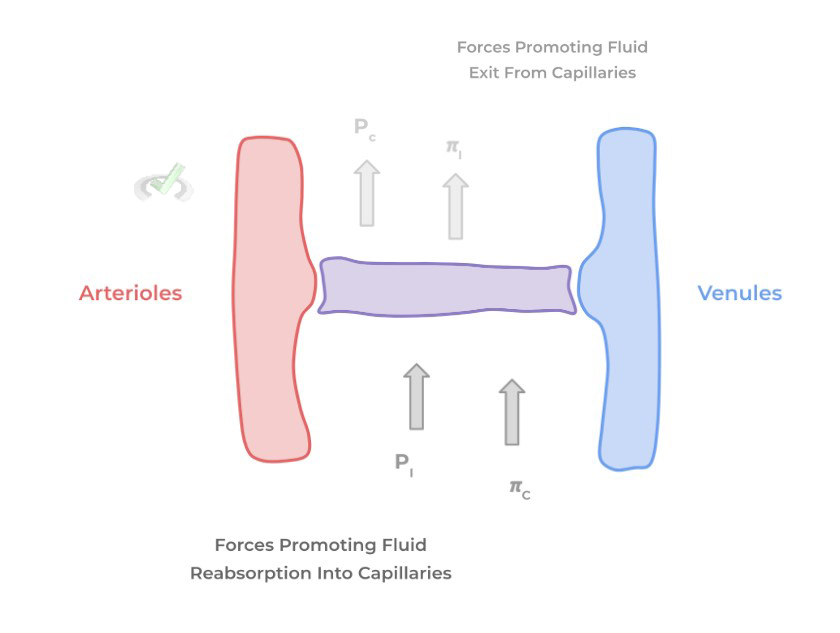I. What are the 1˚ and 2˚ Functions of the Cardiovascular and Lymphatic System
Welcome to the heart of the matter—literally! Before we dive into the nitty-gritty of how these systems work, let's get familiar with the main players: the cardiovascular and lymphatic systems.
Picture the cardiovascular system as the body's bustling highway, with the heart as the central hub and blood vessels as the roads. The lymphatic system, on the other hand, is like the maintenance crew, ensuring everything runs smoothly by managing fluid levels and defending against invaders.
The cardiovascular system is all about blood circulation, delivering oxygen and nutrients to cells, and carting away waste. Meanwhile, the lymphatic system helps maintain fluid balance, absorbs fats from the digestive tract, and fights infections. Together, they keep the body running like a well-oiled machine. Let’s go ahead and take a closer look at their primary and secondary functions!
II. Cardiovascular and Lymphatic System Function
It’s important to emphasize that these 2 systems work together synergistically in regards to the flow of fluid around the body. However, they also have their distinct qualities and characteristics that warrant their own attention to detail as we’ll touch on later.
Just as a side note before we begin, the cardiovascular system is often called the circulatory system because of its role in circulating blood via its associated organs including the heart, blood, and blood vessels.
A. Cardiovascular Function
Just as a side note before we begin, the cardiovascular system is often called the circulatory system because of its role in circulating blood via its associated organs including the heart, blood, and blood vessels.
I. Primary (1˚) Functions
The first and foremost foundational function of the cardiovascular system is the transport of nutrients and oxygen throughout the body. It accomplishes this via the heart whose contraction drives the flow of blood throughout the body (i.e. systemic circulation).
Contained within this blood are the necessary amounts of oxygen and nutrients that are required by the tissue for metabolism in order to generate energy to power various cellular activities. These nutrients include glucose, amino acids, fatty acids, important vitamins, etc. that have all been absorbed at the level of the digestive tract!
Additionally, this exchange of metabolites goes both ways! As various tissues in the body want to extract oxygen and nutrients from the blood, they also want to dispose of any metabolic by-products which can be damaging.
As such, blood also is responsible for extracting various metabolic byproducts from tissues and carrying them to the appropriate organ sites to be properly disposed of. For example CO2 is released via the respiratory system while ammonia and creatinine are excreted via the kidneys.

Finally, the cardiovascular system can also allow for temperature regulation in order to maintain a balanced body temperature and maintain physiological homeostasis. Blood flow can increase at the level of the skin via vasodilation allowing for more heat to be lost to cool down an individual. Conversely, blood flow can decrease at the skin via vasoconstriction to prevent the loss of heat in cases where temperature needs to be conserved.

II. Secondary (2˚) Functions
Some of the main 2˚ functions of the cardiovascular system also revolve around the transport of blood and its constituents throughout the body, one of which are endocrine hormones.
If you’ve covered some of our endocrine topics, you’ll recall that endocrine signaling is unique in the sense that it requires to be transported in blood in order to be distributed systemically and trigger physiological changes distal to their site of origin!
Still on the topic of transport, various cells and proteins crucial in regards to protection against disease are also transported via the blood. Immune cells (also called white blood cells) travel within the blood in order to properly be delivered to a specific tissue site should there be infection — this is the basis for why you get a CBC to see if you have an elevated amount of white blood cells in circulation which can indicate disease/inflammation!
Additionally, various proteins which aid in the formation of clot (via a regulated process called the clotting cascade) are also transported within the blood and can be activated to initiate clot formation should there be some sort of blood vessel damage with the goal of preventing blood loss.

Finally, arguably the most important secondary function is the maintenance of a proper blood pH via the bicarbonate buffer system. As indicated via the equation below, the presence of bicarbonate helps to buffer out any additional acids (H+) which can cause disturbances in the pH of the blood.
Blood requires a stable pH range of anywhere between 7.35-7.45 — a disturbance in the bicarbonate buffer system can result in acid-base abnormalities which can cause widespread systemic physiological dysfunction — think about the various enzymes and proteins that require a narrow pH range to function!

B. Lymphatic Function
Also as a quick reminder, the lymphatic system works synergistically with both the cardiovascular and the immune system! Try to associate lymphatics with various important secondary immune system organs such as the lymph nodes, spleen, thymus, tonsils, etc. This’ll be important as we discuss it a little bit!
I. Primary (1˚) Function
The 2 most important role of the lymphatic system is to allow for the return of interstitial fluid back into circulation and to allow for the presentation of antigens to mount an immune response.
Though it may seem like a big word, interstitial fluid basically refers to the fluid surrounding the tissue and cells, much of which is actually a result of fluid that has leaked from the capillaries. Generally, leakage of fluid out of the capillaries does occur but the extent does depend where in the body and what tissues the capillaries are perfusing.
In order to return this leaked capillary fluid back into systemic circulation, the lymphatic vessels now come into play: they participate extensively in reabsorbing the interstitial fluid and transporting this fluid back into circulation by eventually connecting to various major veins such as the left subclavian vein.
Additionally, along their pathway back to systemic circulation, the lymphatic fluid also will have “pit stops” in various lymph nodes throughout the body. Lymph nodes are a type of immune system organ which is important because they have an abundant amount of immune cells which can trigger an inflammatory response should there be an infection present!
This is crucial because sometimes antigens, which are basically components of an infectious organism that can trigger an immune response, are present within the interstitial fluid if a particular tissue is being infected.
The interstitial fluid containing these antigens can then be taken up by the lymphatic system and eventually make its way to the lymph nodes along its path. Upon entering a lymph node, various immune cells can recognize this foreign antigen and begin to proliferate and initiate an immune response to clear the infection!

II. Secondary (2˚) Function
Finally, probably the main secondary function of the lymphatic system is actually an digestive one as they also function to absorb fats from the digestive tract at the level of the small intestine.
Other nutrients like glucose, amino acids, vitamins, etc. are absorbed normally via the capillaries and go directly into the bloodstream. With the exception of smaller fatty acids, larger fats actually have to be absorbed through lymphatic vessels called lacteals due to their larger diameter. Once absorbed, absorbed fats eventually return to systemic circulation similar to the interstitial fluid.

III. Bridge/Overlap
To understand the importance of interstitial fluid and why there is fluid leak from the capillaries in the first place, it’s best to review the concept of Starting forces when it comes to fluid flow in and out of the capillary blood vessels. Starling forces are actually very important in regards to fluid movement in various disease processes!
I. Starling Forces
Recall that there are 2 main types of Starling forces that determine whether fluid moves out of the blood capillary or is reabsorbed: hydrostatic pressure and oncotic pressure. Think of hydrostatic pressure as the “pushing pressure” or the force that “pushes'' the fluid in or out of the capillary.
Oncotic pressure refers to how the concentration of proteins allows for the movement of fluid in or out of the blood capillaries via osmosis. Recall that it’s because of osmosis that water tends to move where solute concentrations are higher — protein in this case is essentially thought of as a solute!

Finally, the pressures can be divided to where they originate: there’s a capillary hydrostatic (P꜀) and oncotic pressure (𝞹꜀) and an interstitial hydrostatic (Pᵢ) and oncotic pressure (𝞹ᵢ). These forces are all in interplay with one another to ensure proper fluid movement in and out of the capillaries.
The best way to grasp and master these concepts is to ask yourself how changing one variable changes the direction of fluid flow. What would happen if the interstitial hydrostatic pressure increased? What about if the capillary oncotic pressure decreased?
IV. Wrap Up/Key Terms
Let’s take this time to wrap up & concisely summarize what we covered above in the article!
A. Cardiovascular System
The cardiovascular system is the body’s organ system composed of the heart and blood vessels which work to pump blood and its constituents throughout the body!
I. Primary (1˚) Functions
The main functions of the cardiovascular system is to circulate blood to allow for the proper deliverance of energy important molecules such as oxygen and nutrients to be utilized by the tissues. Likewise, it also allows for the tissues to give up metabolic byproducts to the blood to be properly disposed in the appropriate organ systems
II. Secondary (2˚) Function
Additionally, the cardiovascular system also allows for the circulation of endocrine hormones and clotting factors to help regulate physiology and stop bleeding, respectively.
Finally, the blood is also important as it contains the bicarbonate buffer system which helps to maintain physiological pH within the blood.
B. Lymphatic System
The lymphatic system is an associated vessel system which interacts and works synergistically with both the cardiovascular and immune system.
I. Primary (1˚) Functions
There are 2 main functions of the lymphatic system: 1) to allow for the return of interstitial fluid to systemic circulation and 2) to initiate an immune response via the presentation of antigens in lymph nodes.
II. Secondary (2˚) Functions
The main secondary function of the lymphatic system is to allow for the absorption of fats from the digestive system via lymphatic vessels called lacteals.
V. Practice
Take a look at these practice questions to see and solidify your understanding!
Sample Practice Question 1
Which system is primarily responsible for transporting nutrients and oxygen to cells?
A. Lymphatic System
B. Cardiovascular System
C. Nervous System
D. Digestive System
Answer: B. Cardiovascular System
Sample Practice Question 2
What is the primary function of the lymphatic system?
A. Oxygen transport
B. Fluid recovery and immune response
C. Hormone distribution
D. Blood clotting
Answer: B. Fluid recovery and immune response







 To help you achieve your goal MCAT score, we take turns hosting these
To help you achieve your goal MCAT score, we take turns hosting these 





















 reviews on TrustPilot
reviews on TrustPilot